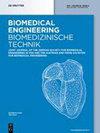欧洲、美国和澳大利亚使用3D打印的定制医疗器械监管要求的比较
IF 1.8
4区 医学
Q4 ENGINEERING, BIOMEDICAL
引用次数: 2
摘要
近几十年来,增材制造(AM)不断发展。质量的提高、技术的进一步发展和价格的下降使增材制造适用于各种工业应用,也适用于医疗设备的制造。3D打印提供了前所未有的适应每个病人解剖结构的可能性,根据具体情况生成医疗设备。在许多司法管辖区,定制设备有资格获得上市前批准标准的豁免。这一规定受到新技术的质疑,比如增材制造。因此,本文比较了欧洲、美国和澳大利亚目前对定制设备的监管要求,并讨论了对3D打印设备的影响。报告的结论是,并非所有司法管辖区都已根据技术进步调整了定制设备的监管框架。必须消除剩余的不确定性,以帮助制造商遵守法规要求,强调增材制造的关键方面。本文章由计算机程序翻译,如有差异,请以英文原文为准。
Comparison of the regulatory requirements for custom-made medical devices using 3D printing in Europe, the United States, and Australia
Abstract Additive manufacturing (AM) has continuously grown in recent decades. Enhanced quality, further development of technology, and fall in prices make AM applicable and capable for various industrial applications, also for the manufacture of medical devices. 3D printing offers the possibility for an unprecedented adaptation to the anatomy of each patient, generating medical devices on a case-by-case basis. In many jurisdictions, custom-made devices qualify for an exemption to pre-market approval standards. This regulation is called into question by new technologies, like AM. Therefore, this article compares the current regulatory requirements for custom-made devices in Europe, the United States, and Australia and discusses the impact on 3D printed devices. It concludes that not all jurisdictions have yet adjusted their regulatory framework for custom-made devices to technological advances. Remaining uncertainties must be eliminated in order to help manufacturers comply with the regulatory requirements, emphasizing key aspects of AM.
求助全文
通过发布文献求助,成功后即可免费获取论文全文。
去求助
来源期刊
CiteScore
3.50
自引率
5.90%
发文量
58
审稿时长
2-3 weeks
期刊介绍:
Biomedical Engineering / Biomedizinische Technik (BMT) is a high-quality forum for the exchange of knowledge in the fields of biomedical engineering, medical information technology and biotechnology/bioengineering. As an established journal with a tradition of more than 60 years, BMT addresses engineers, natural scientists, and clinicians working in research, industry, or clinical practice.

 求助内容:
求助内容: 应助结果提醒方式:
应助结果提醒方式:


